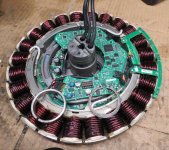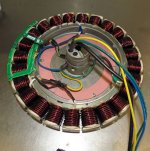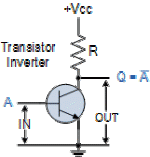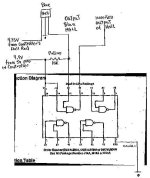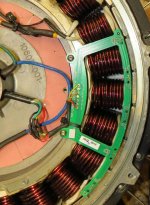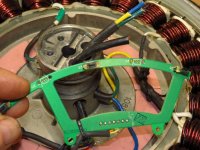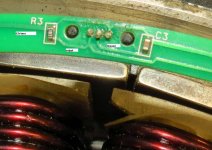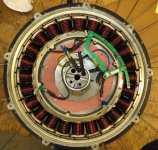I was given a 2010 era E+ bike several years ago. It had rear direct hub motor with the controller inside and a similar sized front hub containing 30 NiMH "D" cells (36v) and a very complex charge boards. When the bike worked, the performance and features were really good.
To improve it, I got rid of the front battery hub and switched to Lithium batteries. I had to keep charge boards for the bike to work. Mostly it worked well, but every so often, the display reported errors that couldn't be cleared. I finally gave up trying to solve the problem, and gutted the controller from the motor. I connected proper size leads directly to the 3 phase wires and hall sensors leading to an external controller. I've done this on Stromer and other hubs that have the controllers built inside. No problems and great performance using the external controller.
I expected the same results with the E+ but instead I get much a much reduced current using 3 external controllers. 17a, 30a and 35a max at 54v deliver only a maximum of 12-14amps. Same controllers on any other geared or direct hub motor deliver the rated amps.
Anyone want to try an explanation? I'm curious.
To improve it, I got rid of the front battery hub and switched to Lithium batteries. I had to keep charge boards for the bike to work. Mostly it worked well, but every so often, the display reported errors that couldn't be cleared. I finally gave up trying to solve the problem, and gutted the controller from the motor. I connected proper size leads directly to the 3 phase wires and hall sensors leading to an external controller. I've done this on Stromer and other hubs that have the controllers built inside. No problems and great performance using the external controller.
I expected the same results with the E+ but instead I get much a much reduced current using 3 external controllers. 17a, 30a and 35a max at 54v deliver only a maximum of 12-14amps. Same controllers on any other geared or direct hub motor deliver the rated amps.
Anyone want to try an explanation? I'm curious.


